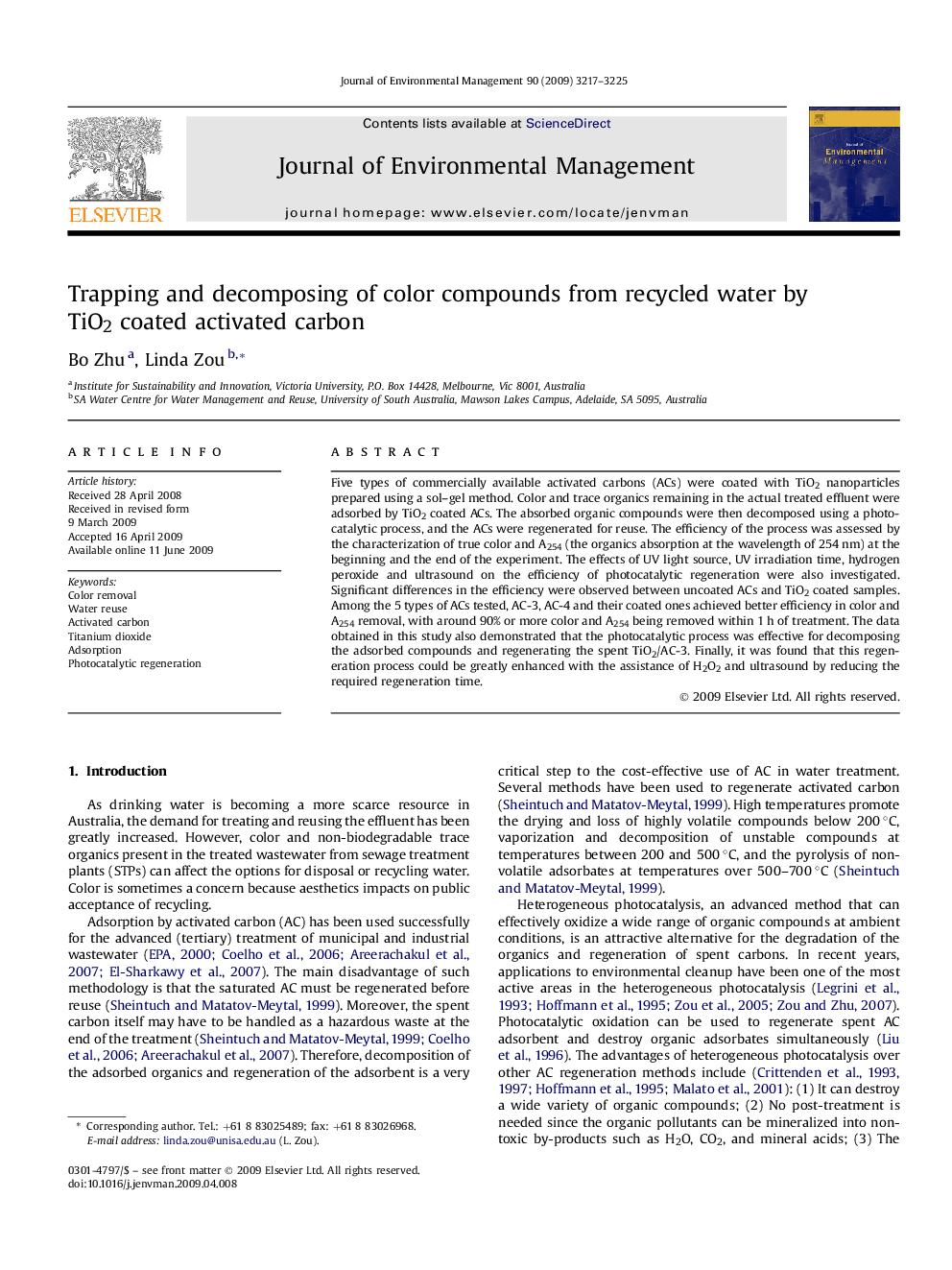| Article ID | Journal | Published Year | Pages | File Type |
|---|---|---|---|---|
| 1058014 | Journal of Environmental Management | 2009 | 9 Pages |
Five types of commercially available activated carbons (ACs) were coated with TiO2 nanoparticles prepared using a sol–gel method. Color and trace organics remaining in the actual treated effluent were adsorbed by TiO2 coated ACs. The absorbed organic compounds were then decomposed using a photocatalytic process, and the ACs were regenerated for reuse. The efficiency of the process was assessed by the characterization of true color and A254 (the organics absorption at the wavelength of 254 nm) at the beginning and the end of the experiment. The effects of UV light source, UV irradiation time, hydrogen peroxide and ultrasound on the efficiency of photocatalytic regeneration were also investigated. Significant differences in the efficiency were observed between uncoated ACs and TiO2 coated samples. Among the 5 types of ACs tested, AC-3, AC-4 and their coated ones achieved better efficiency in color and A254 removal, with around 90% or more color and A254 being removed within 1 h of treatment. The data obtained in this study also demonstrated that the photocatalytic process was effective for decomposing the adsorbed compounds and regenerating the spent TiO2/AC-3. Finally, it was found that this regeneration process could be greatly enhanced with the assistance of H2O2 and ultrasound by reducing the required regeneration time.
